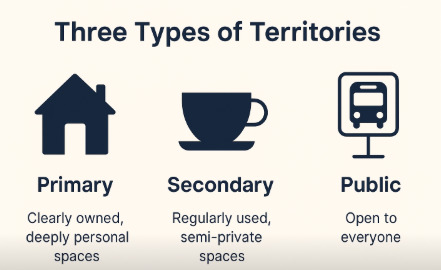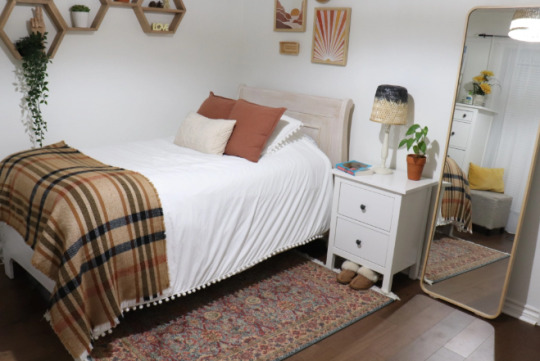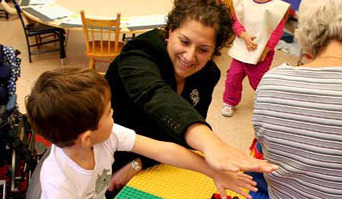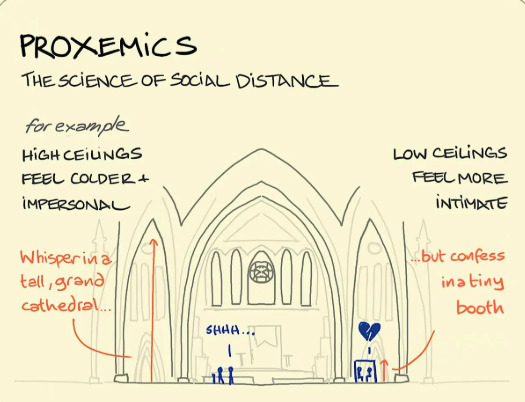Humans say a lot without uttering a word, we claim seats, lean closer to friends, back away from conflict, and feel stressed when crowds get too tight. This blog explores proxemics, which is the study of how we use space to communicate, and how territory, crowding, conversation, gender, and culture all shape our silent social rules.
Don't wanna be here? Send us removal request.
Text
Three Types of Human Territories
1️⃣ Primary Territories These are clearly owned, deeply personal spaces. They’re central to our identity, strongly defended, and permission is usually required to enter.
Examples:
Your bedroom
A family home
A personal office Primary territories create comfort and control. Intrusions here cause the strongest reactions.
2️⃣ Secondary Territories Spaces you regularly use but don’t exclusively own. You feel some entitlement, but it’s shared or semi-public.
Examples:
Your favorite spot in a café
Your regular desk in a shared classroom
A neighborhood basketball court People feel a mild sense of ownership and will defend it lightly.
3️⃣ Public Territories Spaces open to everyone. Access is free, and people come and go. Control is minimal.
Examples:
A park bench
Public sidewalks
Seats on a city bus These spaces can still feel violated if someone behaves rudely (e.g., playing loud music on the bus).




0 notes
Text
Territoriality: Violation, Invasion & Contamination
When someone crosses an invisible boundary, it can trigger discomfort, stress, or conflict. Territorial encroachments come in three main forms:
1. Violation
Definition: When someone uses or disturbs your territory without permission, but doesn’t stay there permanently. Examples:
A coworker uses your desk while you’re at lunch.
A sibling rummages through your room but leaves.
Why it matters: Violation disrupts a sense of ownership and privacy, even if it’s temporary.
2. Invasion
Definition: More serious — someone actually takes over your territory or space for an extended time, changing how you can use it. Examples:
An uninvited guest overstaying at your home.
A stranger sits right next to you in an empty movie theater.
During conflict, armies invade and occupy land (macro-level territoriality).
Why it matters: Invasion often triggers stress and a strong need to defend the space. It raises physiological arousal — heart rate increases, people feel anxious, and confrontation is more likely.
3. Contamination
Definition: When your territory is made unusable or “polluted” by someone else’s actions, even if they don’t stay there. Examples:
A guest spills food on your couch.
Someone leaves trash on your desk.
An ex-roommate leaves the apartment filthy.
Why it matters: Contamination feels like a violation of cleanliness, order, and respect for personal boundaries.




0 notes
Text
When It Gets Too Crowded
High density = lots of people in a space. Crowding = feeling stressed by it. High density can spark aggression if space is tight for too long, but people also enjoy it at concerts or games.
How We Cope:
Short conversations
Ignore strangers
Block unwanted input (headphones, security guards)
Culture matters: Collectivist, high-contact cultures feel less crowded at home than low-contact cultures.


0 notes
Text
What Else Shapes Our Space?
Personal space isn’t just about gender. Age, culture, and even height play roles:
Children stand closer to adults they trust.
Shorter people tend to stand closer so their faces are visible.
Contact cultures (Latin America, Middle East) stand closer than non-contact cultures (Japan, Scandinavia).
Example: A child's space is smaller than as he grows older, shorter female speaking with tall male.


0 notes
Text
Gender & Interpersonal Space
Research shows women generally interact more closely than men — with people of any gender. This may reflect social norms: historically, those with less status (often women) are granted less personal space. However, if a conversation feels threatening or alienating, women tend to increase distance.
Example: Two female friends stand closer than two male friends. In an argument, a woman might step back more than a man.


0 notes
Text
"Without communication, hearts converse in the language of distance." -Kamand Kojouri
0 notes
Text

0 notes
Text
Respect Space, Connect Better
Personal space, territory, crowding, seating, they all shape our comfort, trust, and respect. When you understand proxemics, you navigate differences in gender, age, culture, and context with care, which helps build better connections without saying a word.

0 notes
Text
SEATING BEHAVIOR & STATUS
Where you sit matters:
Conversation: Face-to-face.
Cooperation: Side-by-side.
Competition: Opposite sides.
Leadership: Central or head-of-table seats.
Example: Boss sits at head of table; teammates cluster together.

0 notes
Text
DENSITY, CROWDING & STRESS
Density = number of people in a space.
Crowding = feeling overwhelmed by too many people too close for comfort.
Stress and aggression rise in tight spaces, especially for long periods — but crowds can also be fun (concerts, sports games)!
Coping Behaviors:
Shorter interactions
Ignoring strangers
Using security or barriers
Wearing headphones on crowded trains
Example: Smiling in a stadium vs. feeling drained on a packed subway.



0 notes
Text
CULTURE & CONTACT LEVELS
Cultures vary hugely in what feels “too close”:
High-contact cultures (Latin America, Middle East, Southern Europe): Close proximity, frequent touch, cheek kisses.
Low-contact cultures (Japan, Northern Europe, US): More personal space, minimal touch, bowing or distant greetings.
Example: A hug in Brazil vs. a bow in Japan.



0 notes
Text
CONVERSATIONAL DISTANCE: WHAT SHAPES IT?
Our conversation bubble isn’t fixed. It changes based on:
Gender: Women interact closer than men, but back off if a conversation feels threatening.
Status: Some say lower-status groups get less personal space — which women may internalize.
Age: Kids stand closer to adults they trust.
Height: Shorter people stand closer so their faces are visible.
Relationship & emotion: Closer trust = closer distance.
Example: Laughing friends lean in; arguing coworkers step back.


0 notes
Text
TERRITORIALITY: CLAIMING AND DEFENDING SPACE
We don’t just use space, we defend it! Territoriality means we claim areas as our own: your bedroom, your seat in a classroom, your favorite café table.
Two ways we protect territory:
Prevention: Fences, locked doors, “Reserved” signs.
Reaction: If prevention fails, we confront intruders. This raises heart rate and stress.
Fun Fact: Men feel more stress when someone invades their space head-on; women handle side-by-side invasions more calmly.

0 notes
Text
FOUR TYPES OF INFORMAL SPACE
According to Hall, there are four main distances people use informally:
Intimate Distance (0–18 inches) — Reserved for lovers, close family.
Casual-Personal (1.5–4 ft) — Friends, relaxed chats.
Social-Consultative (4–12 ft) — Strangers, formal talk.
Public (12+ ft) — Public speaking or performing.
Example: Hugging a friend vs. talking to a teacher.




0 notes
Text
Why Space Speaks Louder Than Words
Humans say a lot without uttering a word, we claim seats, lean closer to friends, back away from conflict, and feel stressed when crowds get too tight. This blog explores proxemics, which is the study of how we use space to communicate, and how territory, crowding, conversation, gender, and culture all shape our silent social rules.

0 notes